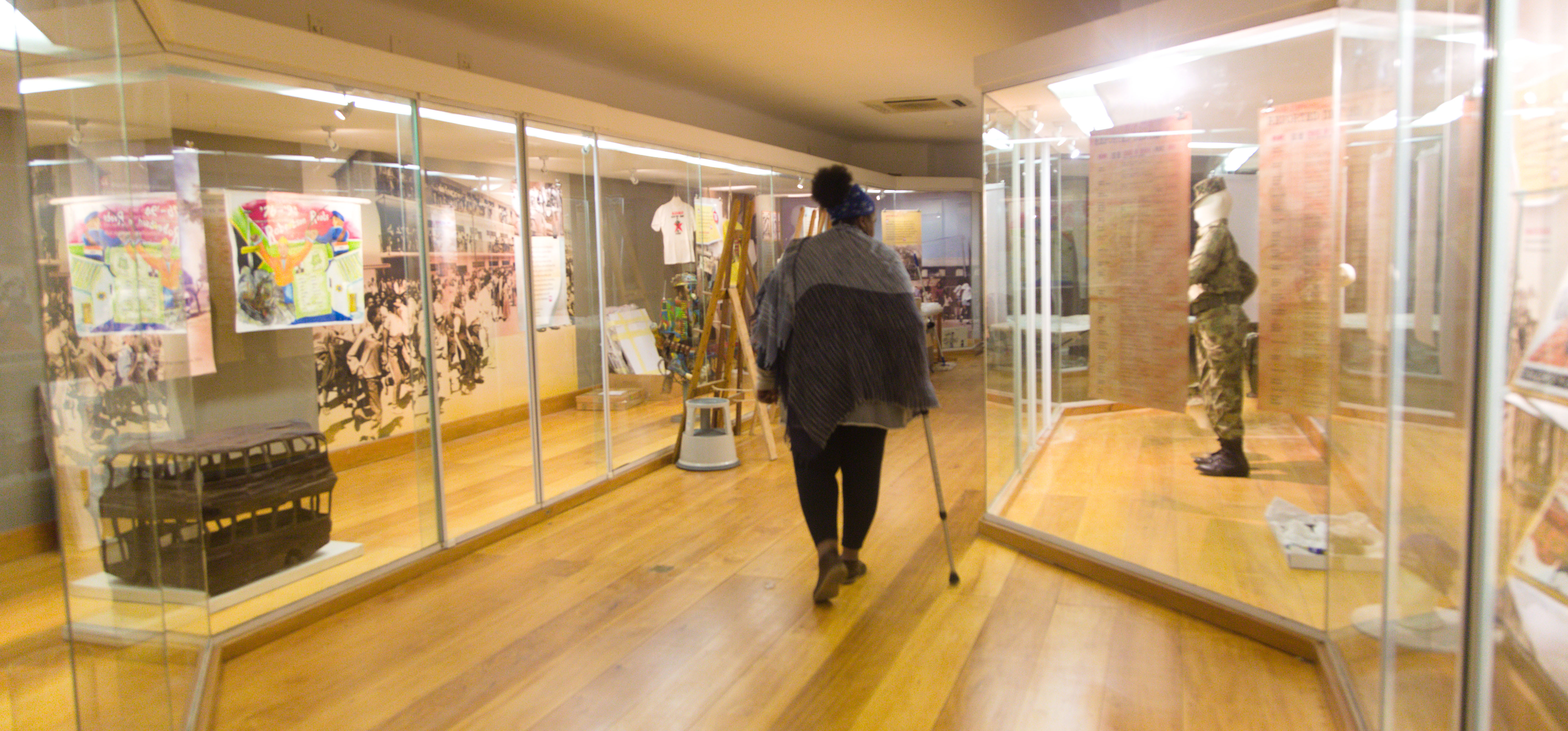On 11 August 1976, Xolile Mosie, a 17 -year-old pupil from Langa on the Cape Flats was killed metres away from a police station. Mosie was the first person killed by police that day when he and his comrades protested against police brutality, against Bantu Education and to show solidarity with the young people who had protested on 16 June 1976 in Soweto.
The story of protests in Cape Town during 1976 is a “story that has been largely marginalised by the national narrative”, said the curator of Aluta Continua, Lynne Abrahams, who spoke to Daily Maverick as final preparations were being made to the exhibition ahead of its launch at Cape Town’s Slave Lodge on Saturday, 15 June.
The exhibition has been a long time in the making. On the 40th anniversary of the Soweto uprising in 2016, Abrahams read a Facebook post stating 129 protesters were killed in Cape Town between August 1976 and January 1977.
On investigating, Abrahams discovered that 148 people were killed due to police action in Cape Town during the protests and over the following months.
 A dummy of a police officer with banners indicating the names of people who were killed after 11 August 1976 in Cape Town as a result of police brutality and the Apartheid regime. Photo: Suné Payne, 11 June 2019.
A dummy of a police officer with banners indicating the names of people who were killed after 11 August 1976 in Cape Town as a result of police brutality and the Apartheid regime. Photo: Suné Payne, 11 June 2019.
This led her to start working on the exhibition, comprised of photographs, T-shirts, clothing, paintings, banners, pamphlets, and art pieces borrowed from owners to commemorate those involved during the youth uprising.
Abrahams said the protests in Cape Town started in August 1976 in the black townships of Langa and Nyanga where young people protested in solidarity with their counterparts in Soweto. The protests were against the Bantu Education system enforced by the apartheid regime, the forced use of Afrikaans in schools, arrests and detentions, and the police brutality experienced by pupils in Soweto during June 1976.
By September, these protests had moved into Manenberg and Athlone, areas where mainly coloured people lived.
During a walk-through of the exhibition, the viewer is transported back to a time when T-shirts were banned, when school uniforms became items of protest, while the names of those involved peer back at you from banners that surround a dummy of an apartheid policeman.
In another part of the exhibition, a large cut-out of a tree is a reference to Sandile Dikeni’s Guava Juice (a poem about a mass gathering that reminded Dikeni of the June 16, 1976 protests). It tells you that the ripples of the 1976 uprising were felt long after the Casspirs left the townships.
The exhibition spills out into a smaller room where pictures of South Africa’s transition to democracy and several chapters from the Bill of Rights are on display.
 Some of the memorabilia from the Aluta Continua exhibition, which includes a section on The Bill of Rights. The exhibition will start on Saturday, 15 June 2019. Photo: Suné Payne, 11 June 2019.
Some of the memorabilia from the Aluta Continua exhibition, which includes a section on The Bill of Rights. The exhibition will start on Saturday, 15 June 2019. Photo: Suné Payne, 11 June 2019.
This was done to “challenge the visitor in their roles,” said Abrahams, who wants viewers to examine themselves, their community and their country and try to understand not only where South Africa has come from as a nation but to question the role the individual has in shaping their community and country.
But more importantly, Abrahams said, “part of our history is dying” as many of the activists from the 1970s and 1980s had died.
“They are taking their stories with them.”
Abrahams said that through the exhibition, she had hoped that communities would start telling their own stories and that those who took part in the struggle – dead and alive – would be honoured.
Abrahams was assisted on the two-year project by an intern, Zandile Tshamlambo from the University of the Western Cape.
Researching this exhibition, Tshamlambo told Daily Maverick, made her appreciate “the sacrifices they [ youth activists] made”.
The building where the exhibition is held – Cape Town’s Slave Lodge – has its own history. It housed slaves who served the Dutch colonists between 1678 and 1811. In 1966 the Slave Lodge was converted into a cultural history museum.
The decision to host the exhibition there was a conscious one, said Abrahams, because it was “not only a building where slaves were kept, but how identities were constructed”.
The Slave Lodge’s theme from human wrongs to human rights was the most appropriate venue for such an exhibition, said Abrahams. DM.
The exhibition debuts at the Slave Lodge in Cape Town on Saturday, 14 June at 12pm. Visit iziko.org.za for more details.




 Some of the memorabilia from the Aluta Continua exhibition, which includes a section on The Bill of Rights. The exhibition will start on Saturday, 15 June 2019. Photo: Suné Payne, 11 June 2019.
Some of the memorabilia from the Aluta Continua exhibition, which includes a section on The Bill of Rights. The exhibition will start on Saturday, 15 June 2019. Photo: Suné Payne, 11 June 2019. 